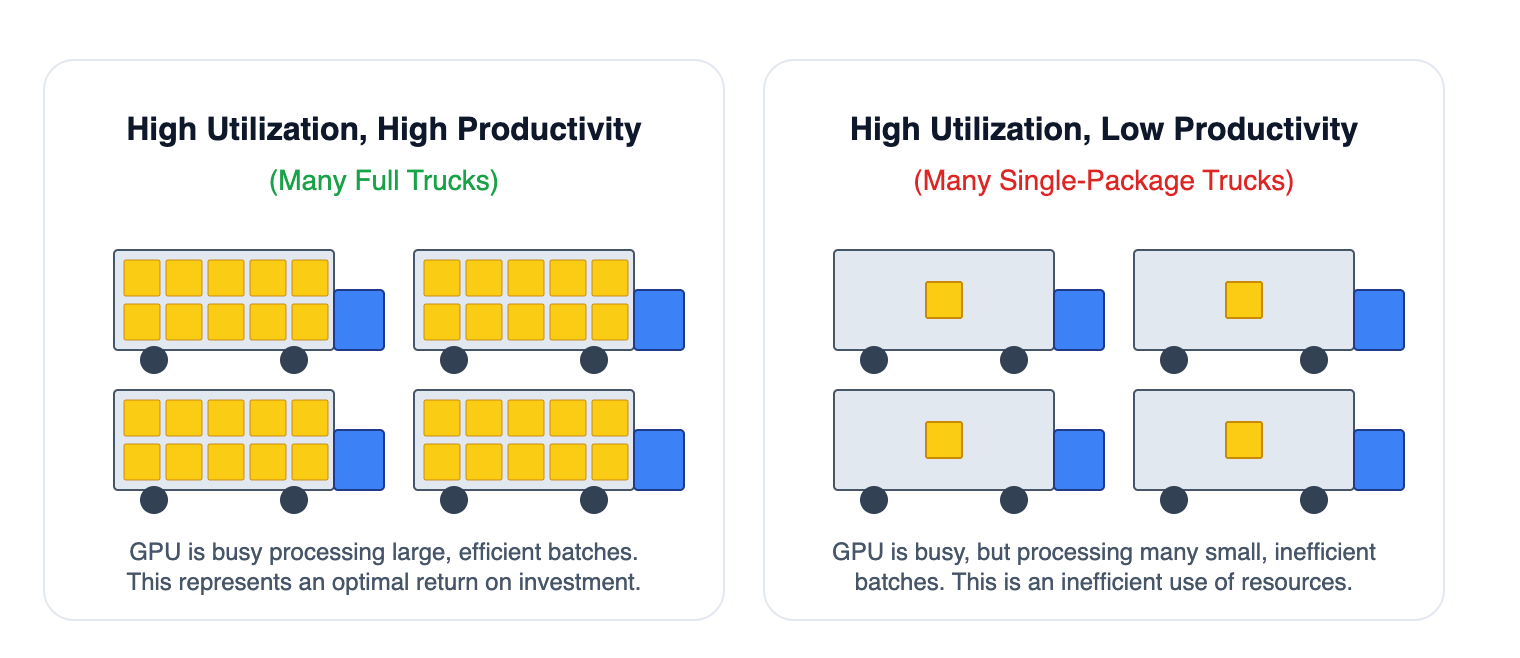When I wrote recently in Forbes that we’re racing toward an AI-everywhere future without the right infrastructure, my goal was to spark a conversation about how we build this future responsibly, not recklessly. AI will transform productivity, scientific discovery, and public services. But the value creation and the reputational and operational risks will be determined by the quality of the infrastructure beneath it.
In this follow-up, I want to make something explicit that the Forbes piece only hinted at: what “building it right” actually looks like, and how Virtana helps leaders get there
What “Right” Looks Like for AI Infrastructure
Executives don’t buy GPUs; they buy outcomes. The infrastructure we’re building must deliver four things simultaneously:
- Resilient & Available: Mission systems can’t go dark because a storage queue is backed up or a cluster autoscaler is over-corrected.
- Predictable Performance: Model training, data prep, and inference pipelines must hit SLOs even as demand spikes and architectures evolve.
- Cost & Energy Governance: Run the capacity you need—no more, no less—while proving responsible energy use.
- Operational Agility: Ship new AI capabilities quickly without breaking what’s already in production.
Most organizations can meet one or two of these pillars at a time. The challenge is achieving all four, continuously, across hybrid and regulated environments. That is the observability gap AI exposes.
Factory-Grade Observability for the AI Era
At Virtana, we built our platform to provide factory-grade observability for AI, what we call AI Factory Observability (AIFO), because AI isn’t a single application; it’s an end-to-end production system, whether you are running your AI workloads on-prem or in the cloud.
Here’s how that maps to real operating realities:
1) Full-Stack, Cross-Domain Visibility
AI failures rarely live in one layer. A model can “fail” because a feature store slowed due to storage contention, or because east-west traffic saturated a top-of-rack switch, or because a GPU pool was fragmented across nodes. Virtana correlates metrics, logs, traces, topology, and events across the entire stack—on-prem, cloud, edge, and air-gapped—so you see the causal chain, not just symptoms.
Outcome: Faster fault isolation, lower MTTR, and fewer cross-team escalations, which translate directly into resilient services and safeguarded revenue streams.
2) GPU & Accelerator Observability with Workload Context
Utilization averages hide waste and risk. We provide per-GPU and per-job visibility—hotspots, memory pressure, scheduling wait times, fragmentation, and contention—linked to the applications and business services that consume them. You can spot idle capacity, right-size batch windows, and keep critical inference lanes clear.
Outcome: Higher effective throughput for the environment and consistent response time for customer-facing AI experiences.
3) Cost & Capacity Governance for AI
AI spend scales differently: capacity spikes during training, then shifts into steady-state inference with unpredictable traffic patterns. Virtana ties cost, utilization, and performance together so leaders can see which models and data pipelines are driving spend, where zombie capacity lives, and what trade-offs exist between performance and cost.
Outcome: Spend you can defend. Budget predictability, clean unit economics (cost per training hour, cost per inference), and reallocation from waste to innovation.
4) Energy & Sustainability Signal, Operationalized
Leaders are being asked to demonstrate that AI growth aligns with sustainability targets. Virtana provides the operational telemetry (power draw, thermal conditions, workload placement, and right-sizing insights) needed to reduce energy intensity without degrading performance. It’s not a slide, it’s an operating practice.
Outcome: Lower energy per unit of work, credible reporting for boards and regulators, and the ability to scale responsibly.
5) Resilience & SLO Management for AI Services
We model dependencies across services—APIs, data stores, queues, GPU pools—so you can set business-level SLOs (e.g., “95% of inferences under 50ms”) and manage to them. Our Event Intelligence (AIOps) reduces alert noise, flags anomalous behavior early, and recommends actions that protect the SLO before customers feel it.
Outcome: SLO adherence under pressure, fewer customer-visible incidents, and stronger contractual performance.
6) Kubernetes & Data Pipeline Observability—Built for Reality
Most AI runs on container platforms with complex operators (Ray, Spark, Airflow, Kubeflow). Virtana’s Container Observability traces job lifecycle and resource behavior through these operators and across clusters and clouds, so you can decide what to move, scale, or pause based on impact, not guesswork.
Outcome: Throughput gains in training and extract, load transform (ETL), and fewer failed or starved jobs that quietly drain time and compute.
7) Executive Control Tower: Global View
Boards and CEOs don’t want ten dashboards; they want one truth. Our Global View brings together cost, performance, risk, and sustainability into an executive control tower: clear trendlines, hotspots, and actions, not raw telemetry. It’s a shared operating picture for CIO, CFO, CISO, CDO/Head of AI, and Ops.
Outcome: Faster alignment and decision speed across the leadership team.
The Business Outcomes You Can Count On
While every environment is different, leaders consistently realize outcomes in four categories:
1. Service Resilience & Risk Reduction
- Fewer customer-visible incidents and faster recovery when they happen.
- Early anomaly detection in data and infrastructure that prevents cascading failures.
- Stronger compliance posture where uptime and data handling are audited.
2. Performance That Translates to Revenue
- Higher training throughput and more reliable inference latency—features ship and stay shipped.
- Stable experience during traffic surges tied to campaigns or seasonality.
- Better product velocity because teams spend less time chasing ghosts across layers.
3. Cost & Energy Efficiency
- Concrete reclaim of zombie capacity and right-sizing of GPU and storage tiers.
- Clear unit economics (e.g., cost per experiment, cost per inference) to guide prioritization.
- Reduced energy per unit of AI work, feeding sustainability reports without manual gymnastics.
4. Operating Model Maturity
- Shared KPIs for CIO, CFO, and business owners; trade-offs made with data, not opinion.
- Tighter FinOps–SRE–MLOps loop: design, run, and improve on one platform.
- Confidence to scale pilots into production because visibility and control are already in place.
What This Looks Like in Practice
Healthcare: An integrated care platform uses Virtana to trace latency spikes back to storage and network contention in a specific availability zone. Remediation brings inference below clinical SLOs and stabilizes clinician workflows, without over-provisioning GPUs.
Financial Services: A fraud detection team uses Global View to expose the unit cost of specific models. By consolidating low-utilization clusters and right-sizing batch windows, they free capacity for real-time inference, improving catch rates while avoiding new hardware spend.
Public Sector & Regulated Environments: Agencies run air-gapped clusters. Virtana provides cross-domain observability without exporting sensitive data off-network, maintaining mission readiness while meeting compliance requirements.
Why We Care
At Virtana, we’re optimistic about AI and insistent that optimism be grounded in operational excellence. We believe responsible leaders should be able to prove that their AI investments are resilient, performant, cost-effective, and sustainable. That isn’t a slide for the board; it’s a daily operating discipline. Our job is to make that discipline measurable, manageable, and scalable.
The infrastructure we build today will determine whether AI becomes humanity’s greatest tool or its greatest vulnerability. Let’s build it right—and let’s build it to last.

Paul Appleby
CEO




